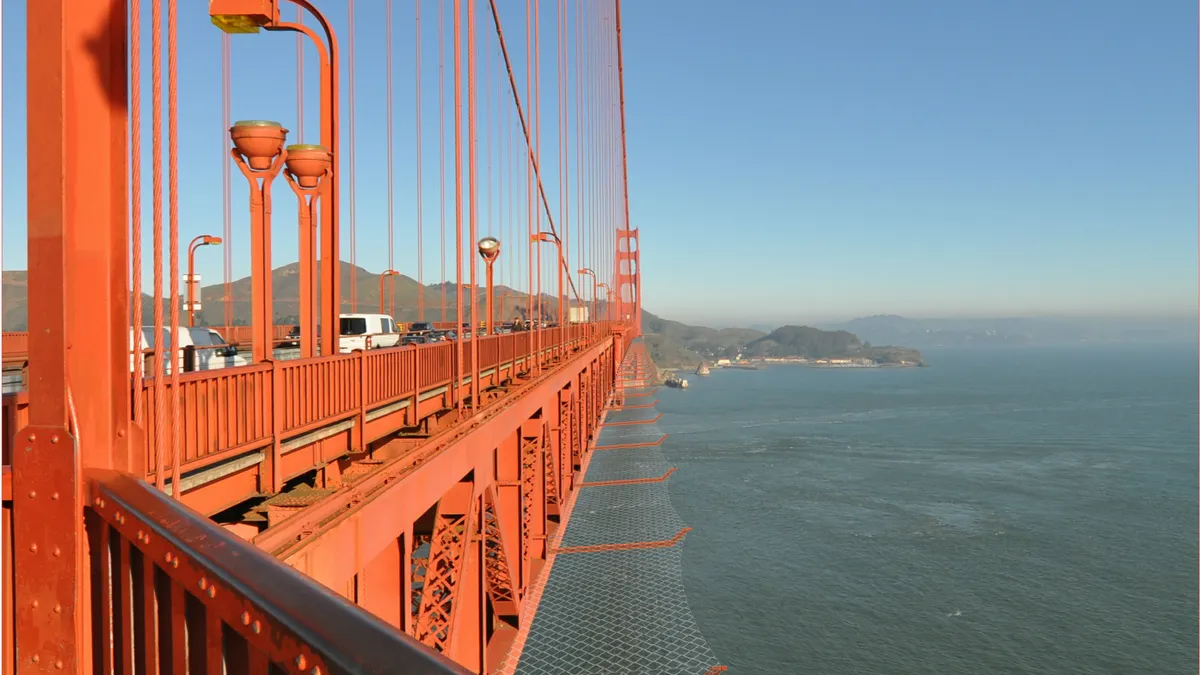Dive Brief:
- Shimmick Construction Co., an AECOM company since 2017, and Danny's Construction Co. have started work on a $211 million steel net suicide barrier at the Golden Gate Bridge in San Francisco, California, according to the San Francisco Chronicle. Almost 1,700 individuals have jumped to their deaths from the iconic span since it opened in 1937.
- The cost of the barrier is three times more than what the Golden Gate Bridge, Highway and Transportation District Board of Directors anticipated when it first put the project out to bid in 2014 due to the complicated engineering and design requirements and the logistics of installing 385,000 square feet of marine-grade stainless steel — enough to cover seven football fields — 250 feet above the Golden Gate Strait. Additionally, the barrier project will require 600 tons of steel to support the net; 12 battery-powered maintenance travelers with the accompanying 1,100 tons of supporting rail girders and 425 tons of wind retrofit steel.
- The barrier, which will hang 20 feet below the span's public sidewalk and jut out 20 feet from the side of the bridge, has spent years in the development stage, with preservationists arguing that any suicide prevention element would take away from the look of the iconic bridge, and others worried that any additional structure would catch the wind and potentially pull the bridge down. The design is such, however, that it blends in with the existing bridge color and the surrounding environment, and the bridge district has installed equipment that will combat the effects of high wind.
Dive Insight:
Maintenance of the Golden Gate Bridge is a year-round endeavor, with approximately 200 employees, including ironworkers, electricians and painters, on hand to keep the span operational and ready for the tourists who visit from all over the world.
Unfortunately, a significant number of other U.S. bridges don't receive that kind of attention. The American Road & Transportation Builders Association (ARTBA) reported earlier this year, using U.S. Department of Transportation data, that 30% of the country's 612,677 bridges needed some kind of repair work done and that 9% were structurally deficient. The bridges in the most urgent need of repair were about 25 years beyond their useful lives.
States and the federal government manage to squeeze out some funding for bridge work, but in January, Sen. Sherrod Brown (D-Ohio) proposed the $75 billion Bridge Investment Act, which would pay for a 10-year, competitive federal grant program so that states could make more repairs. The bill immediately gained industry support and was last referred to the Senate Committee on Environment and Public Works.











